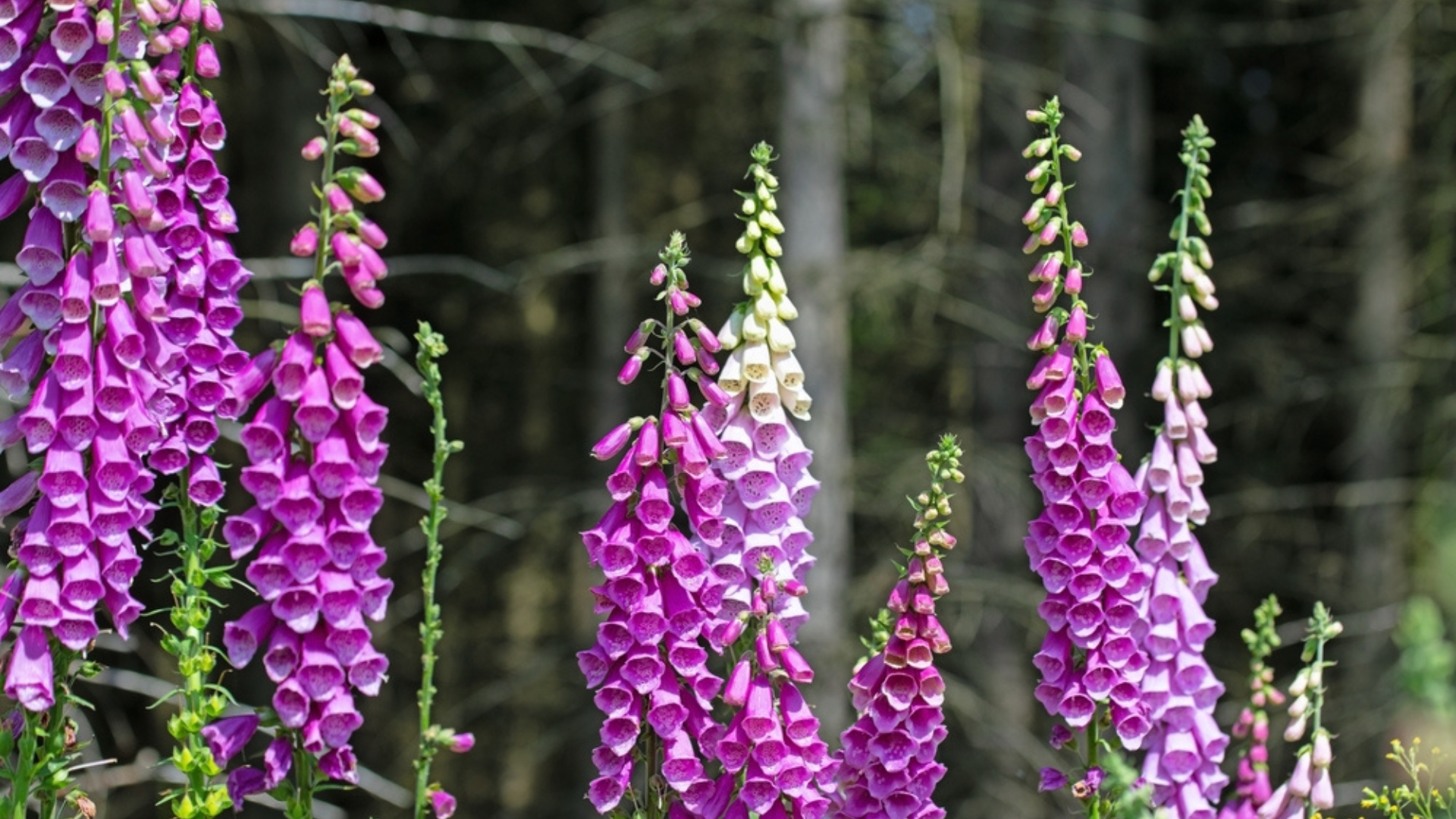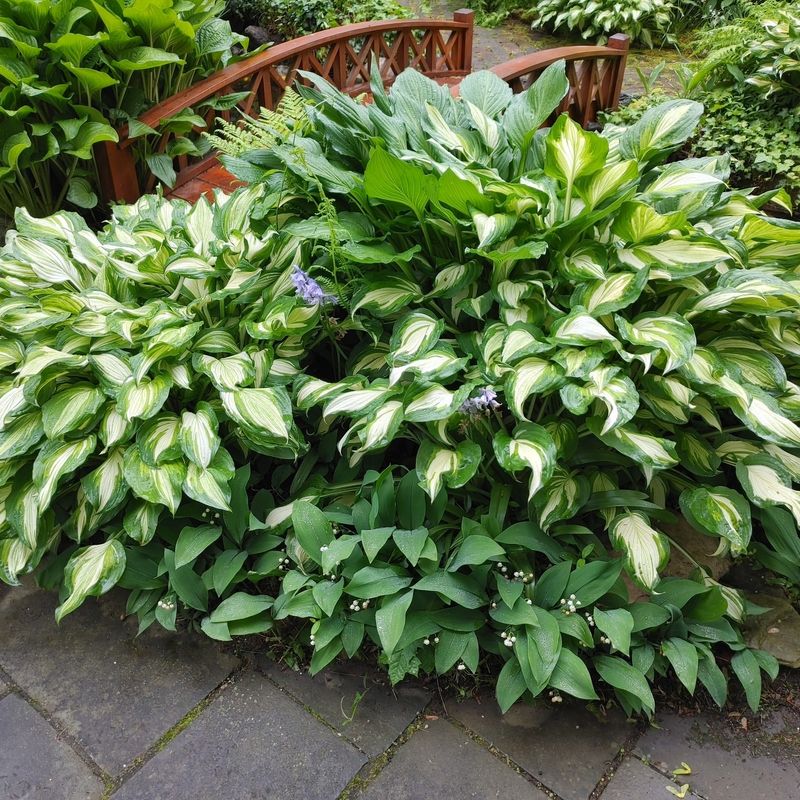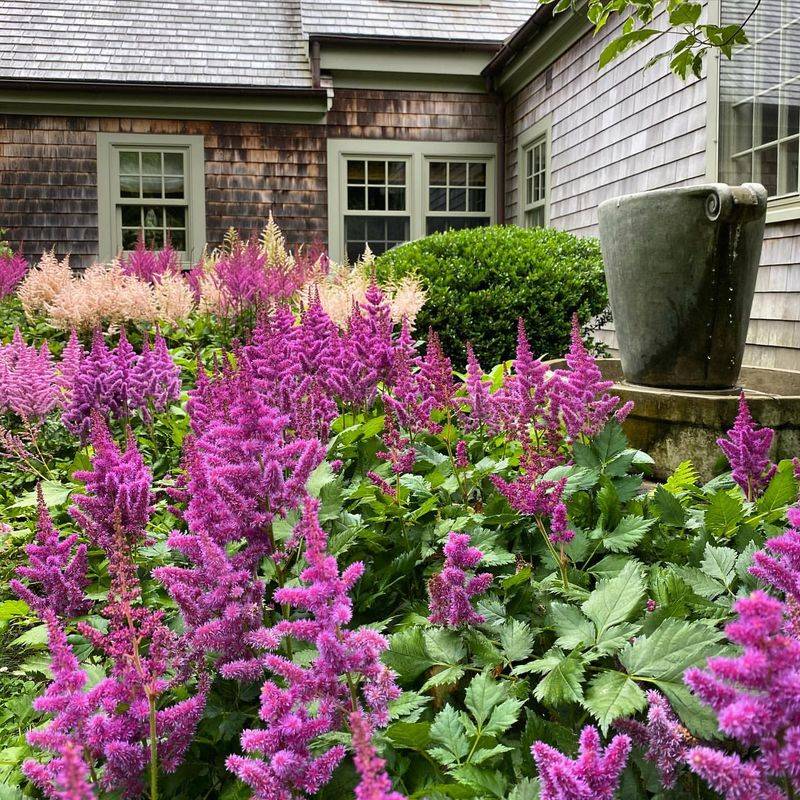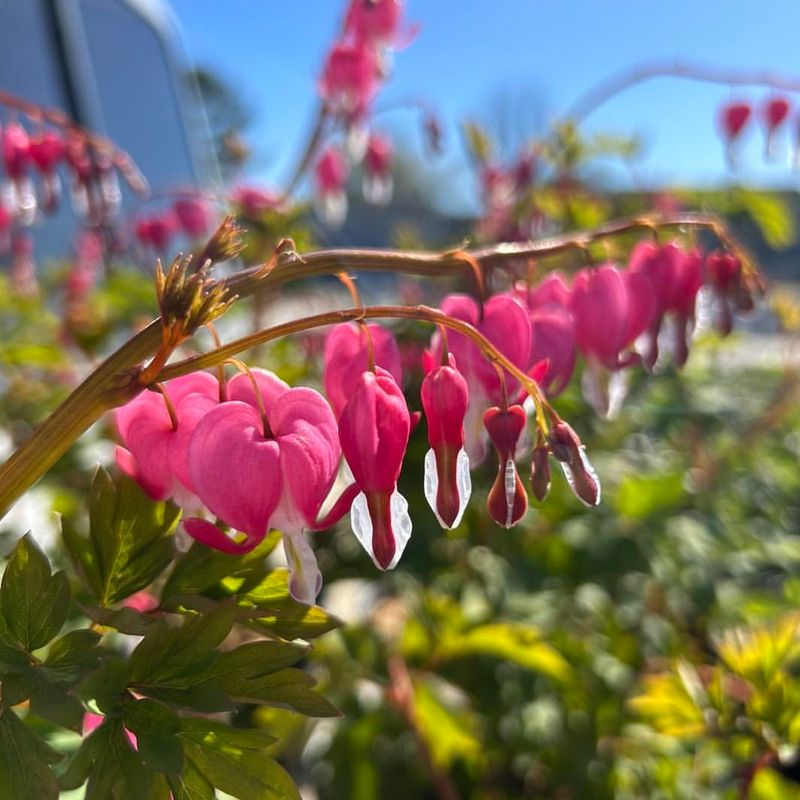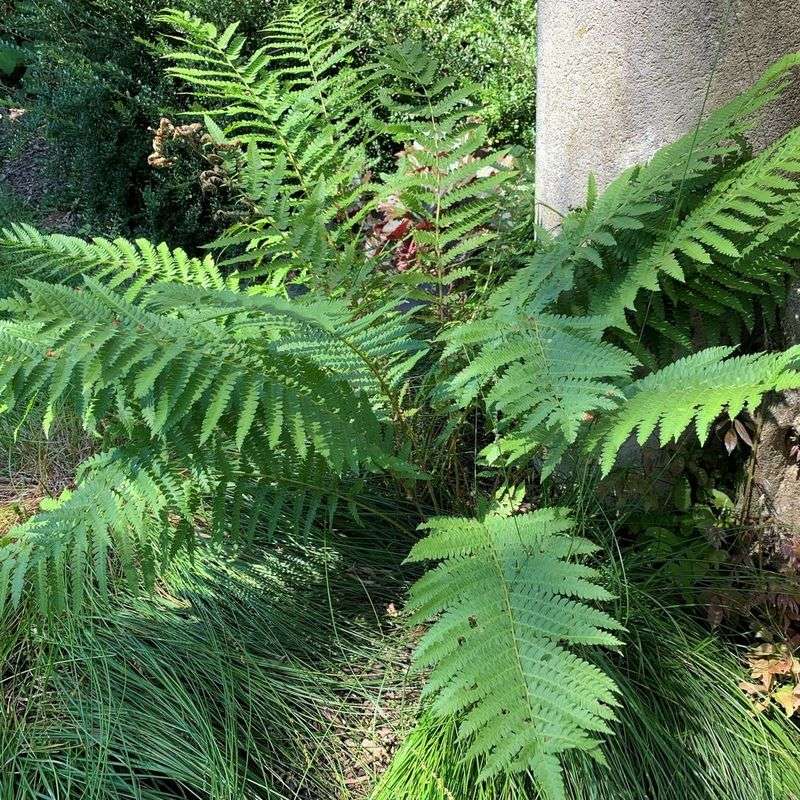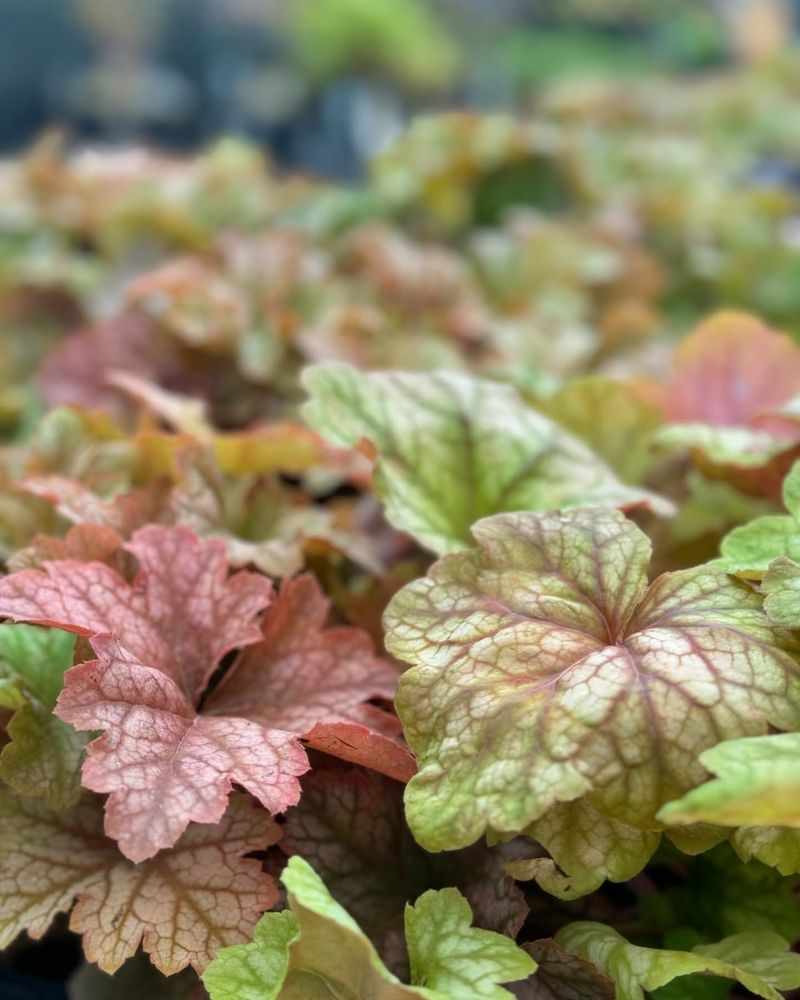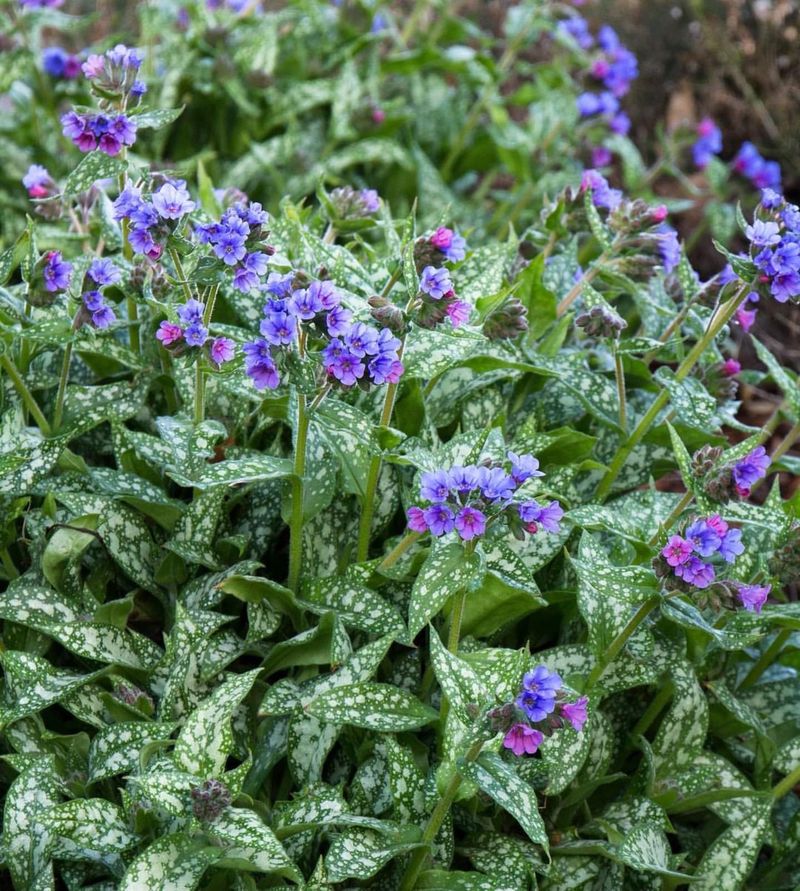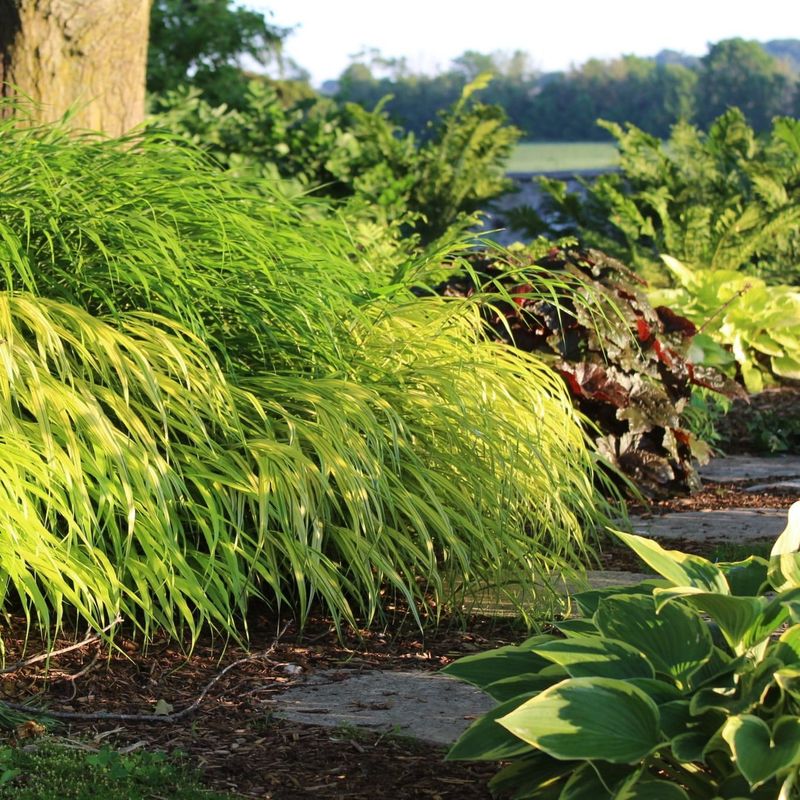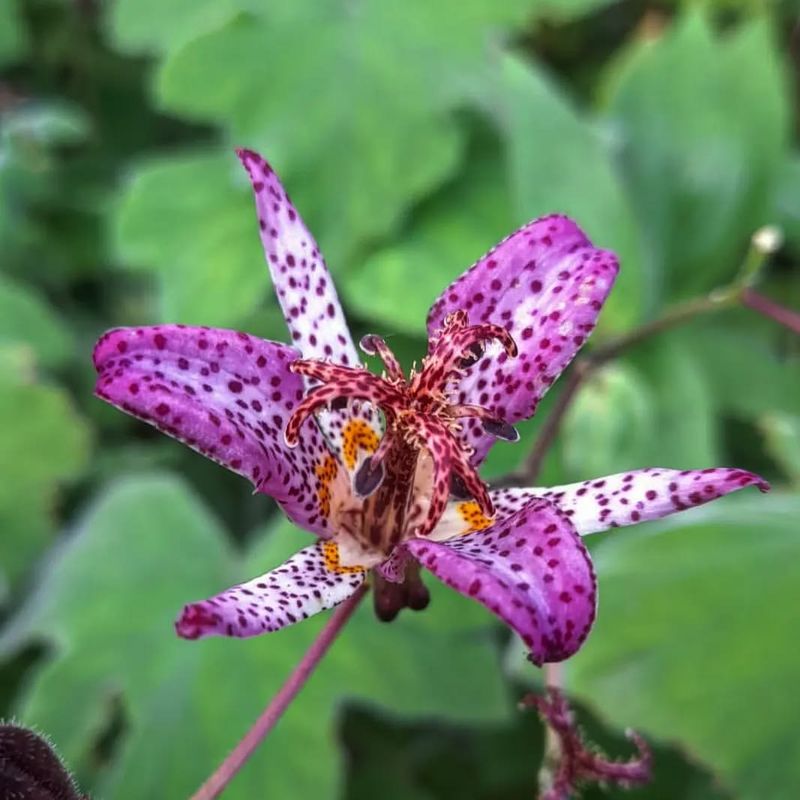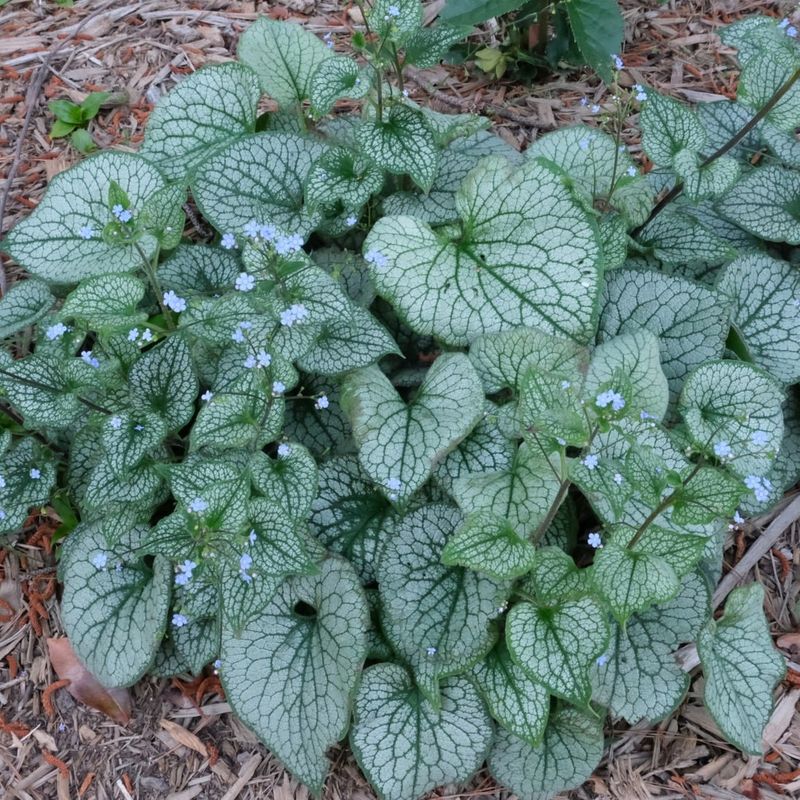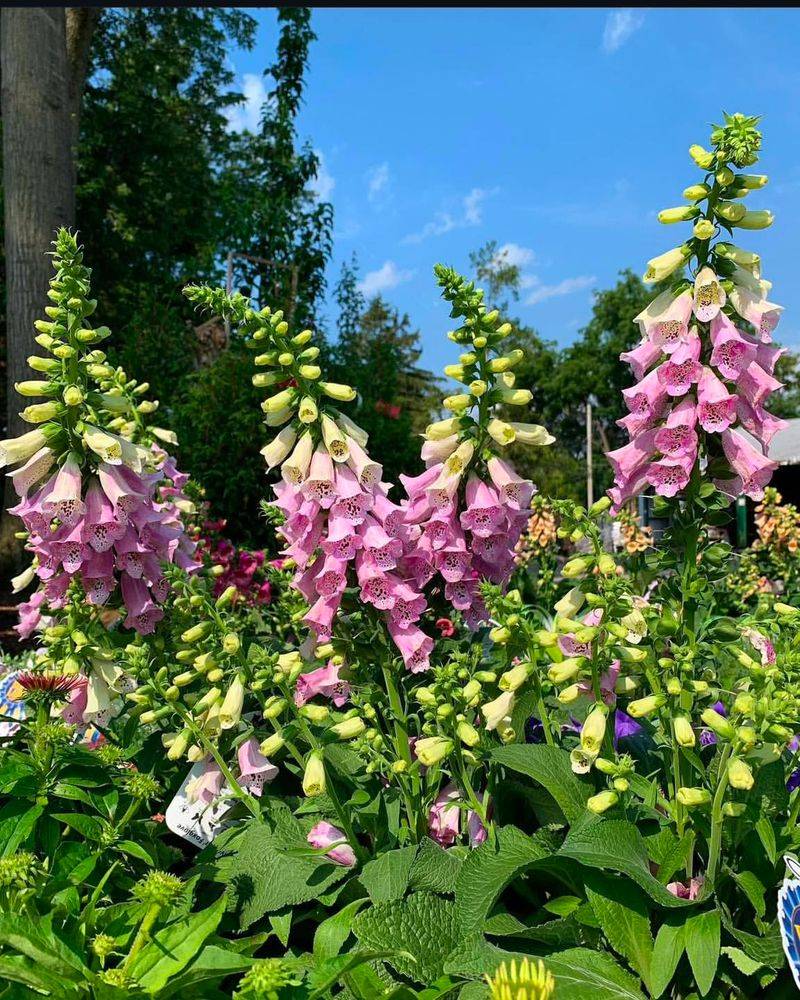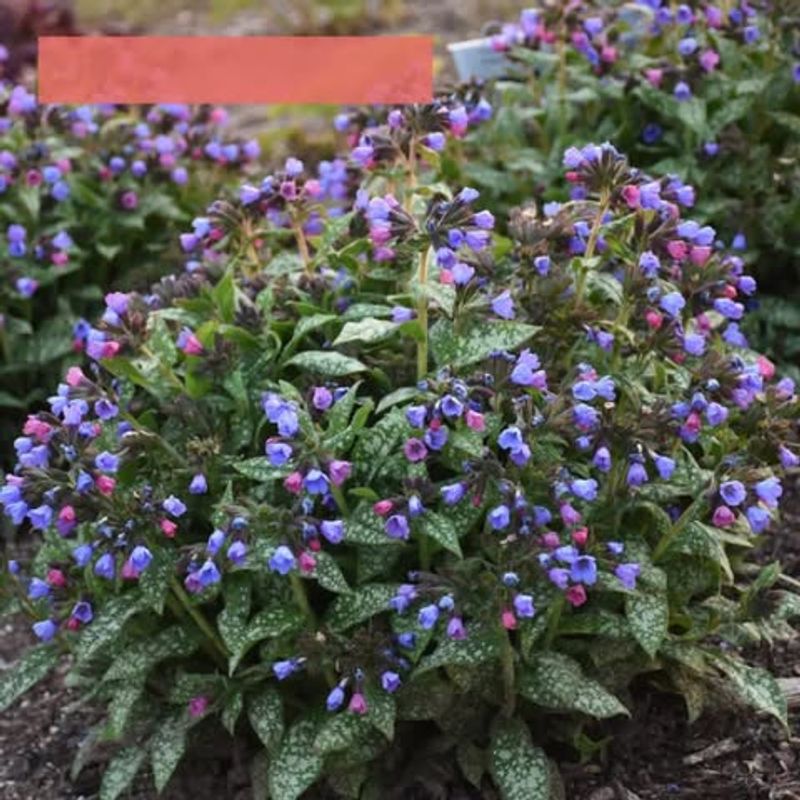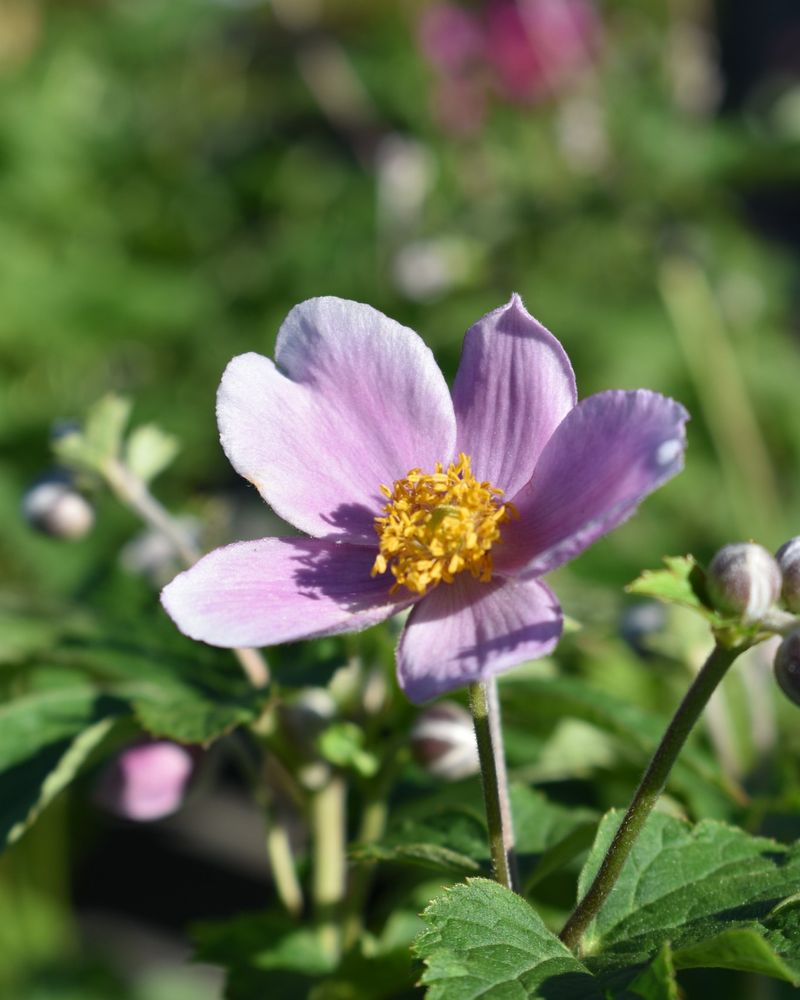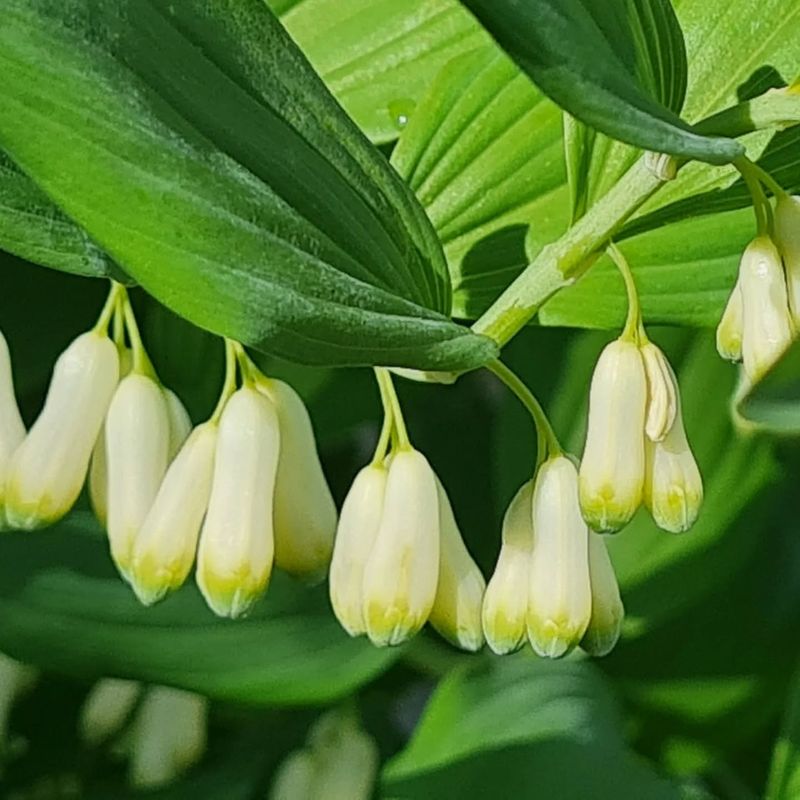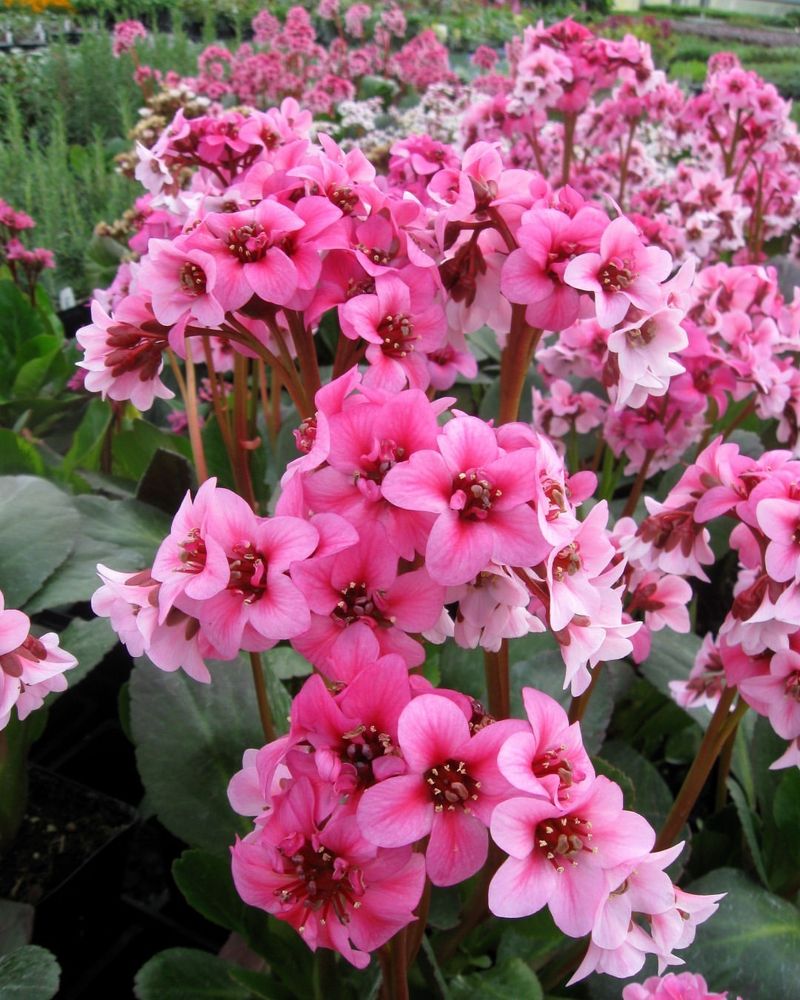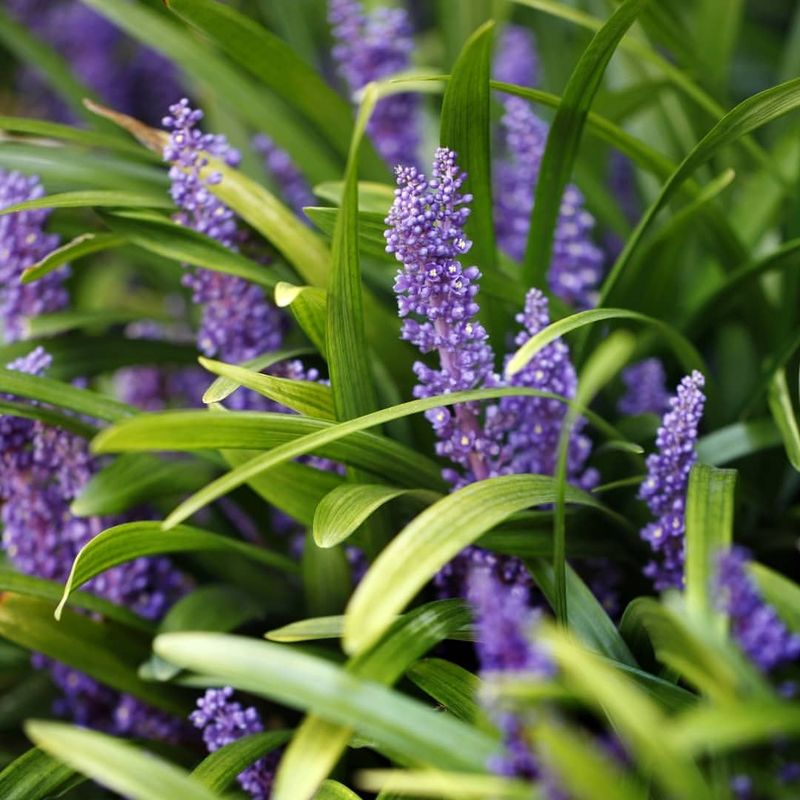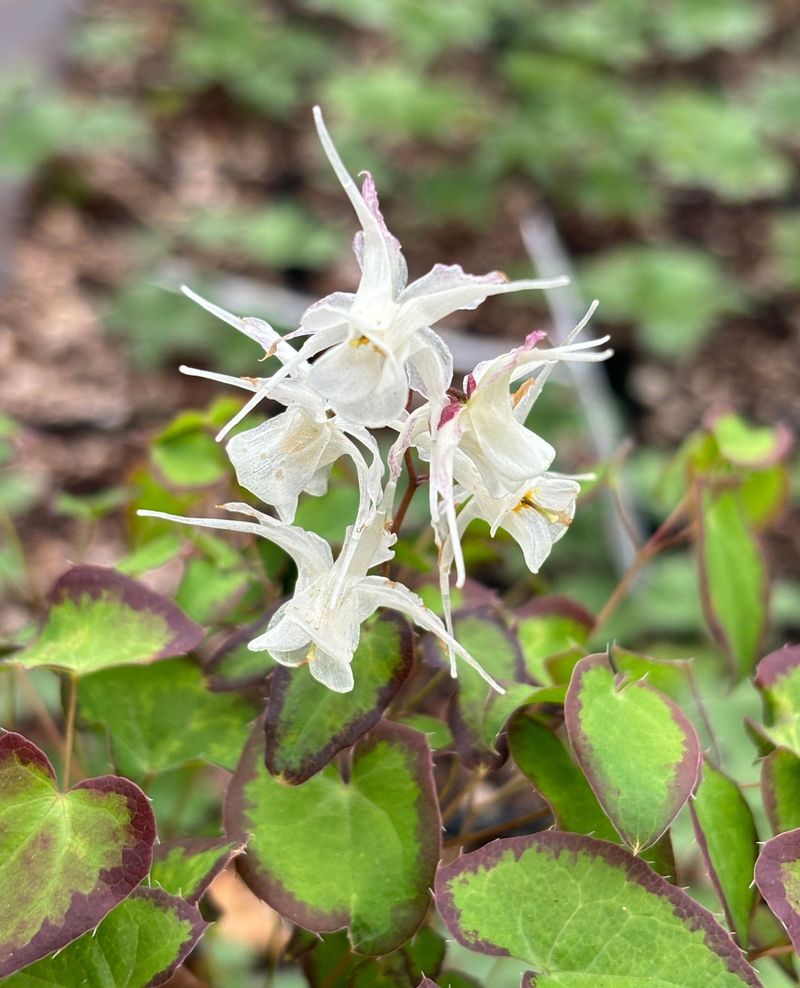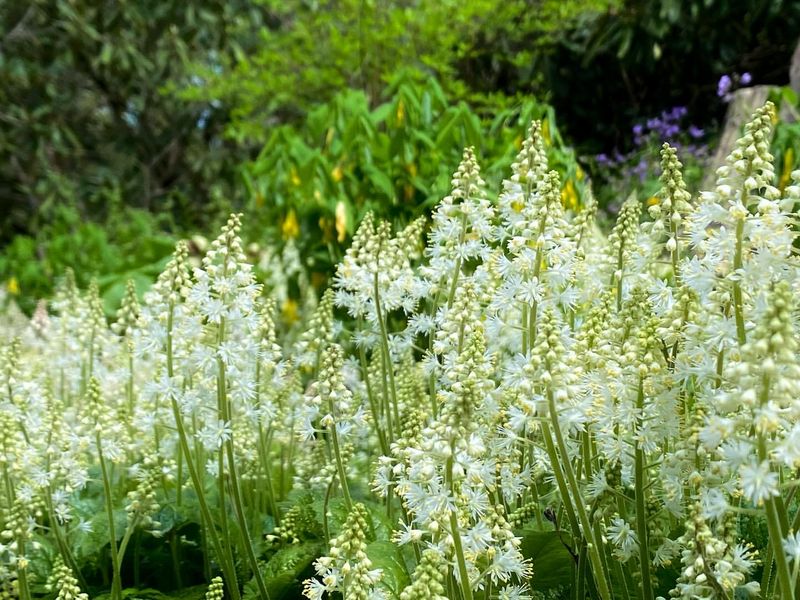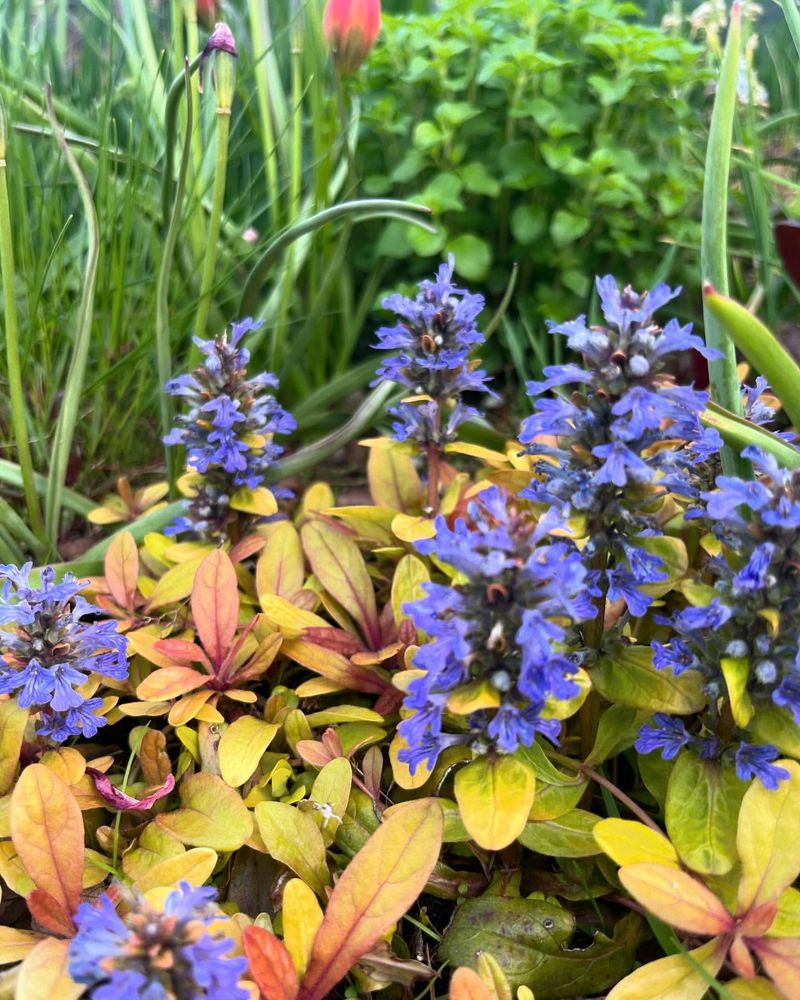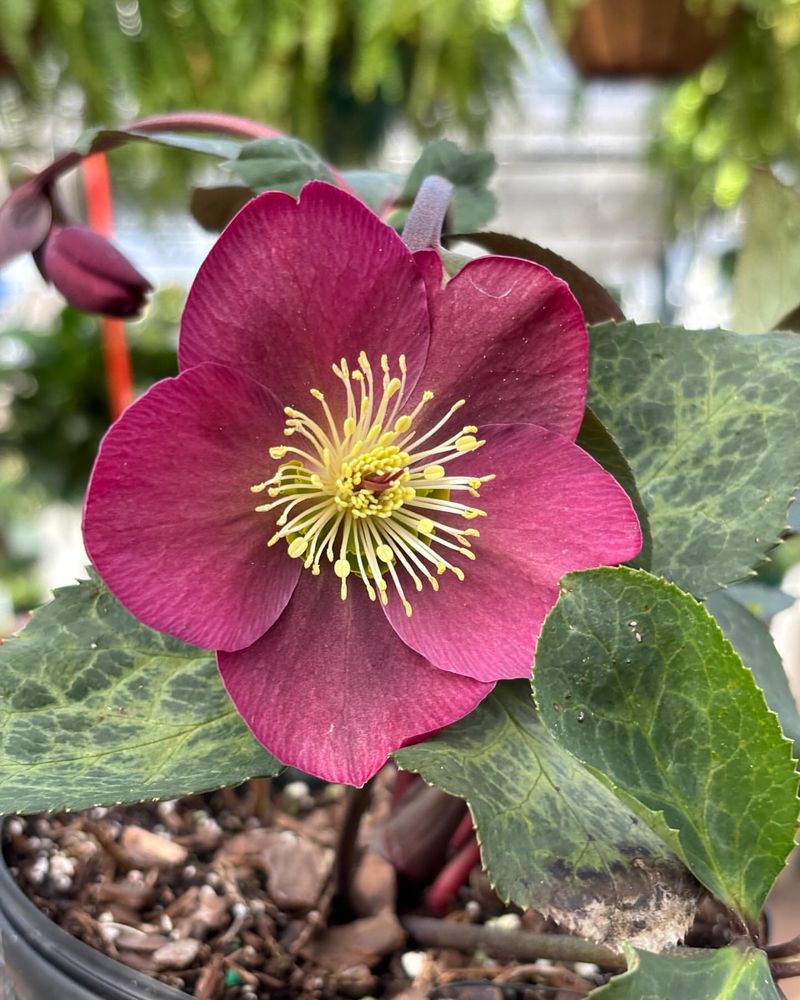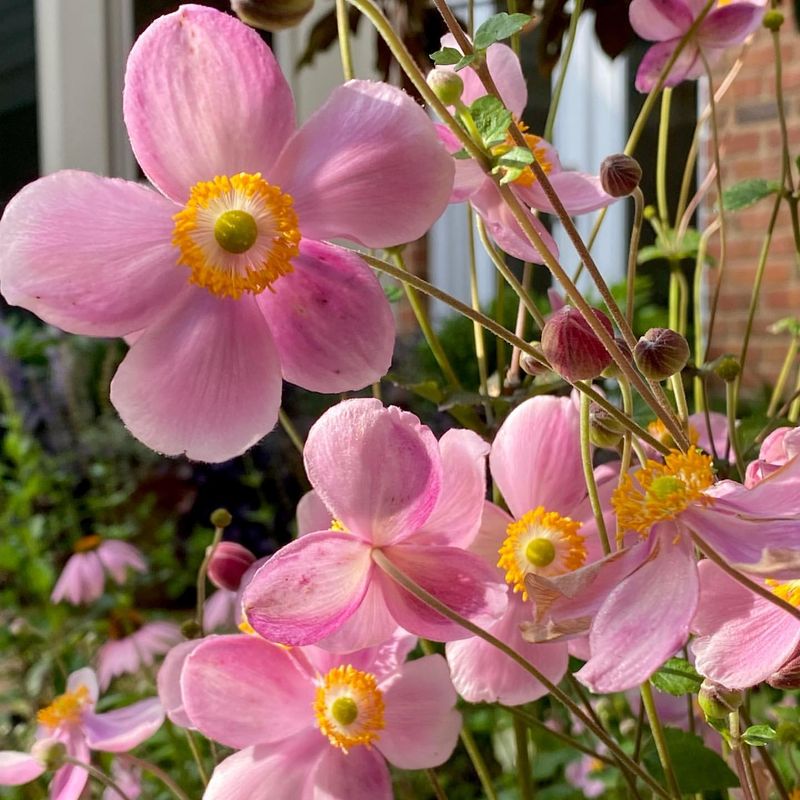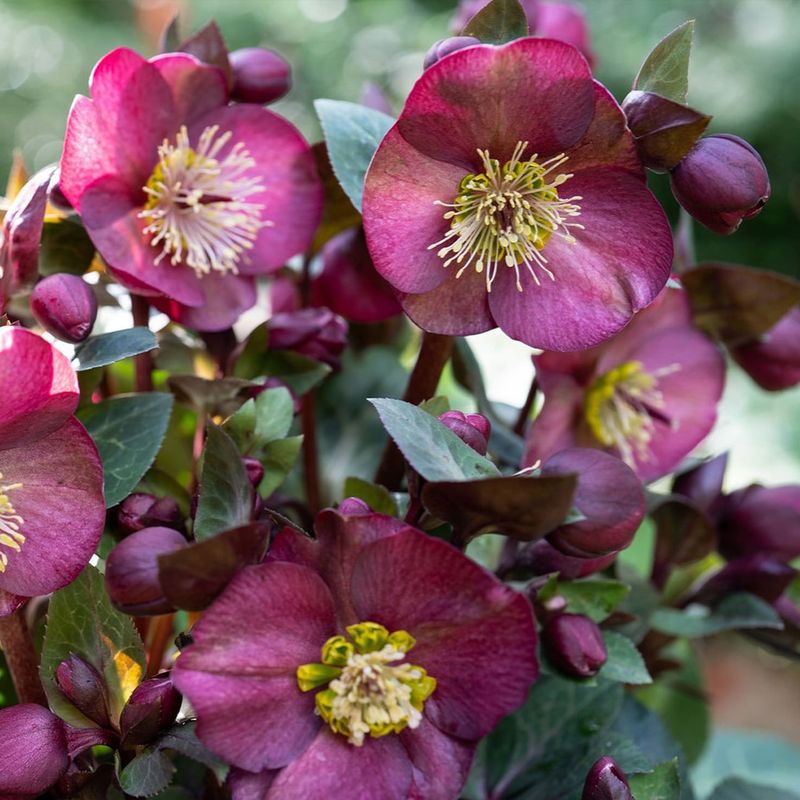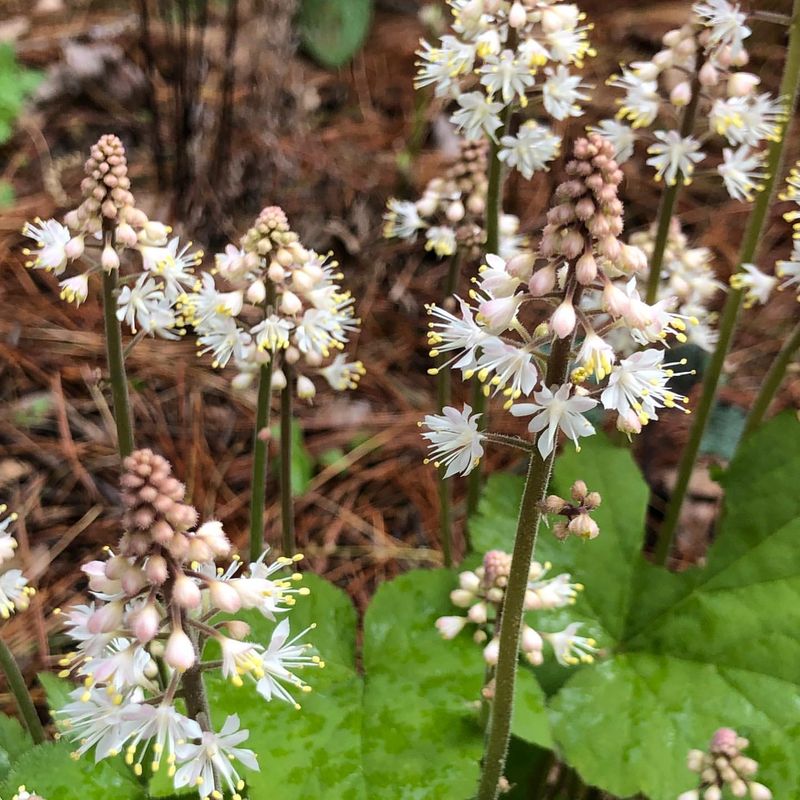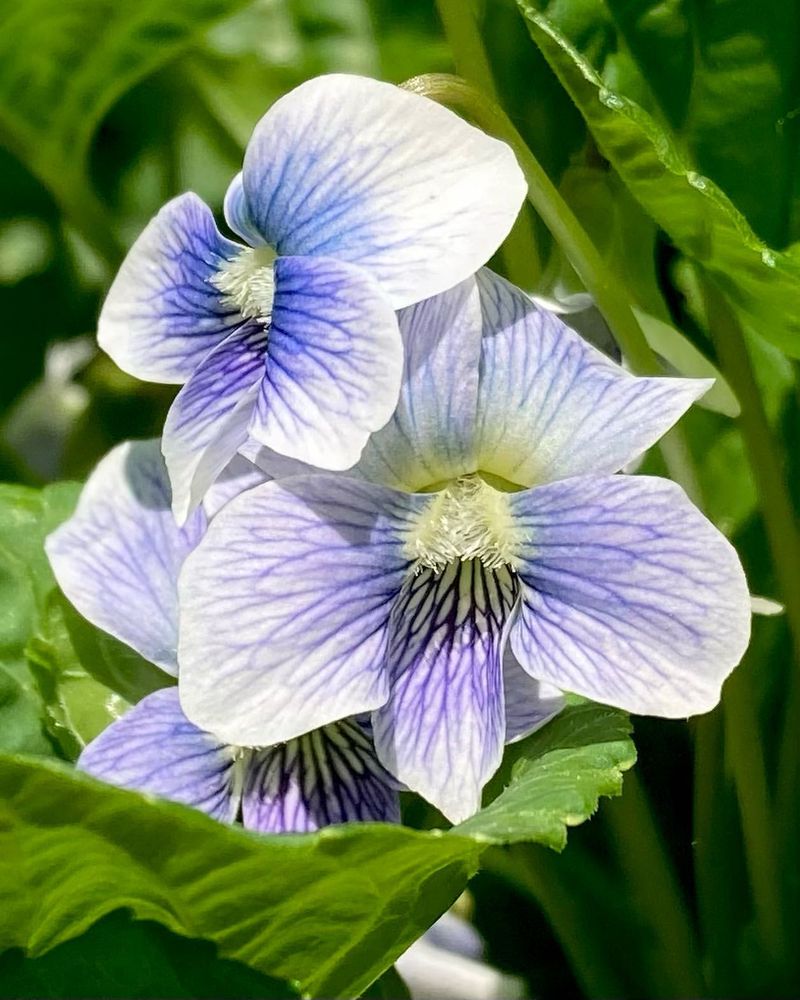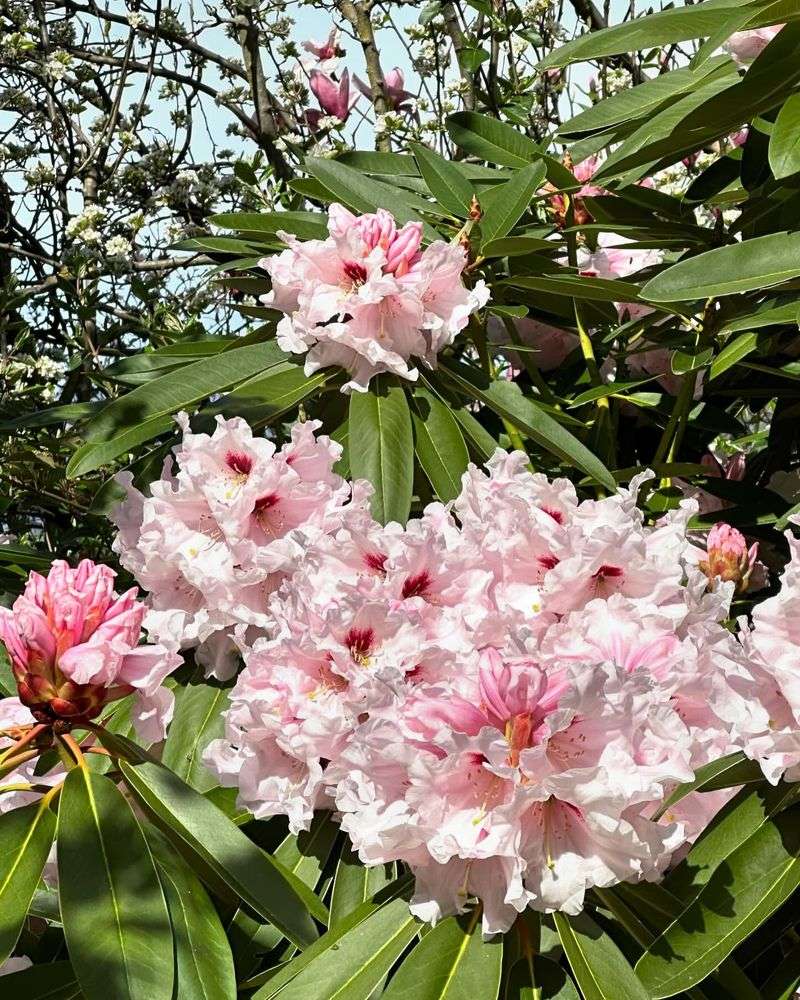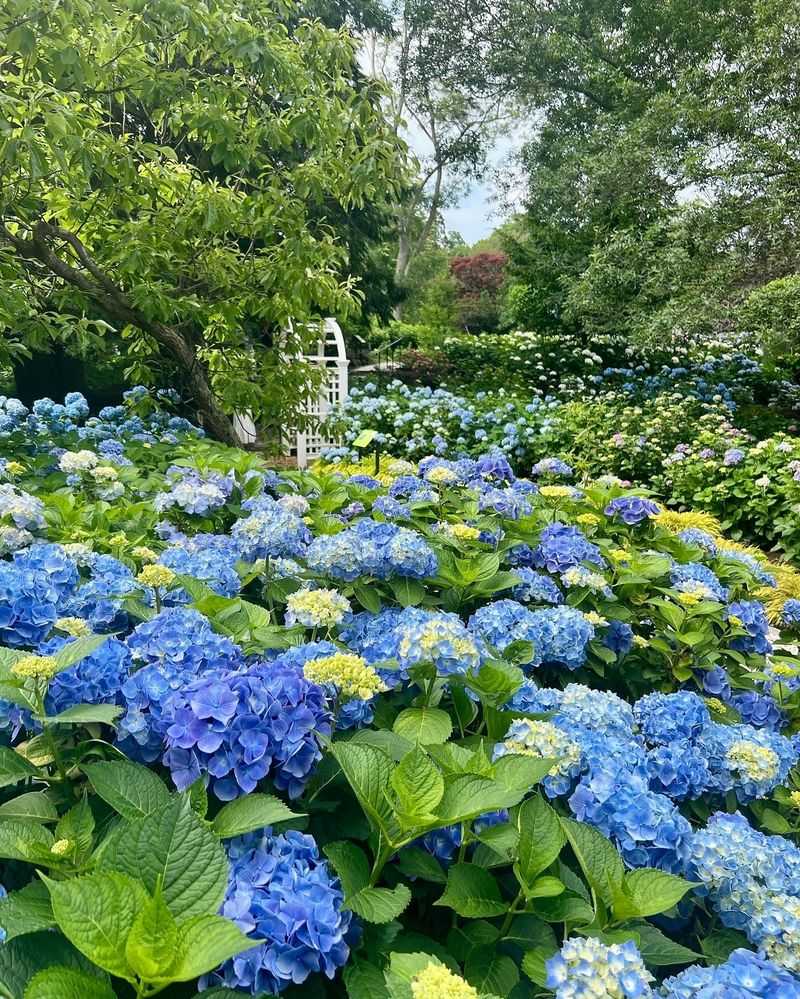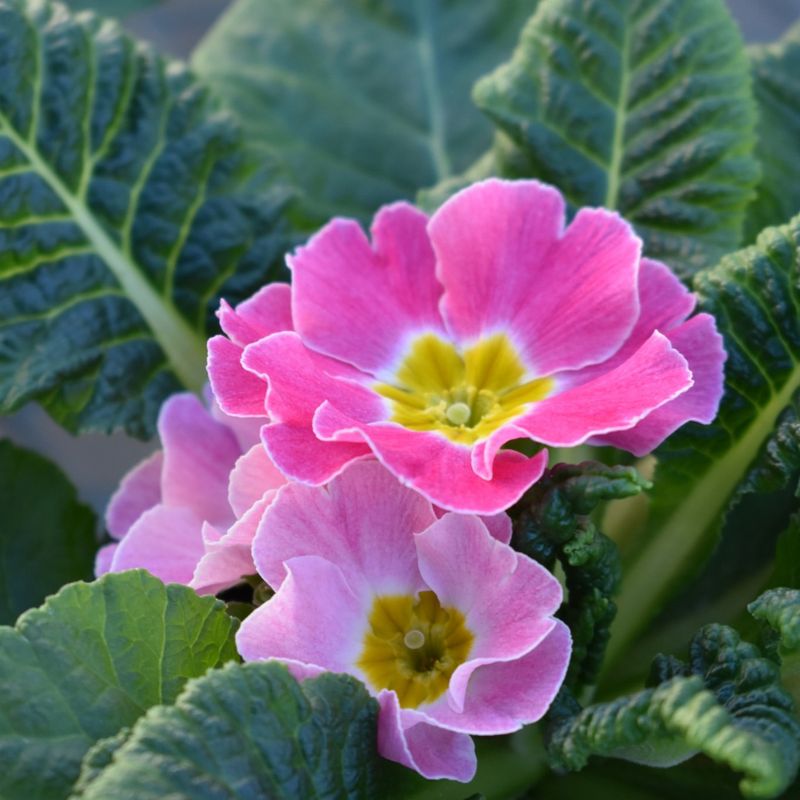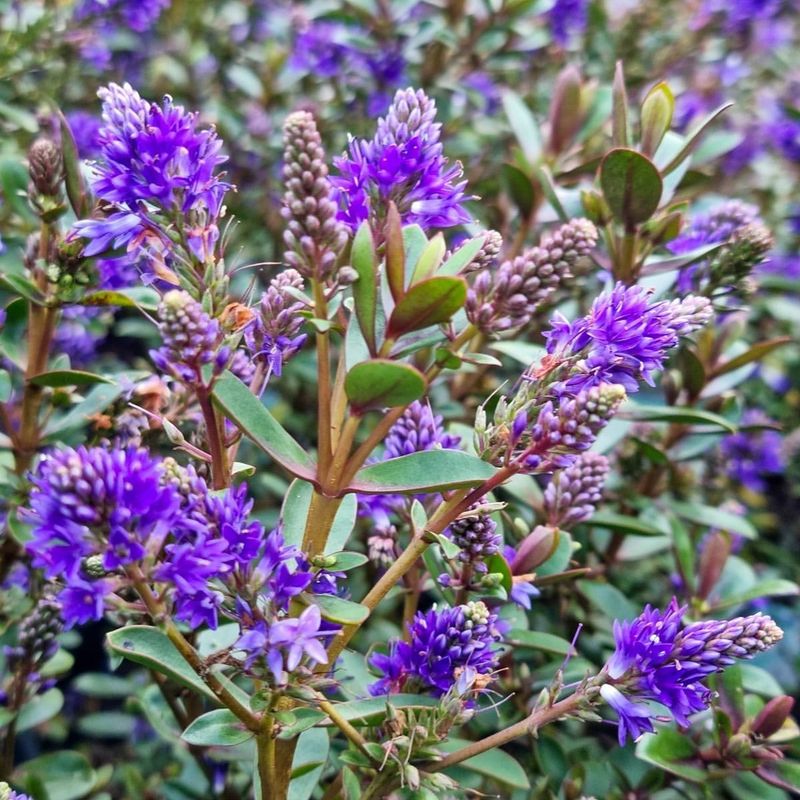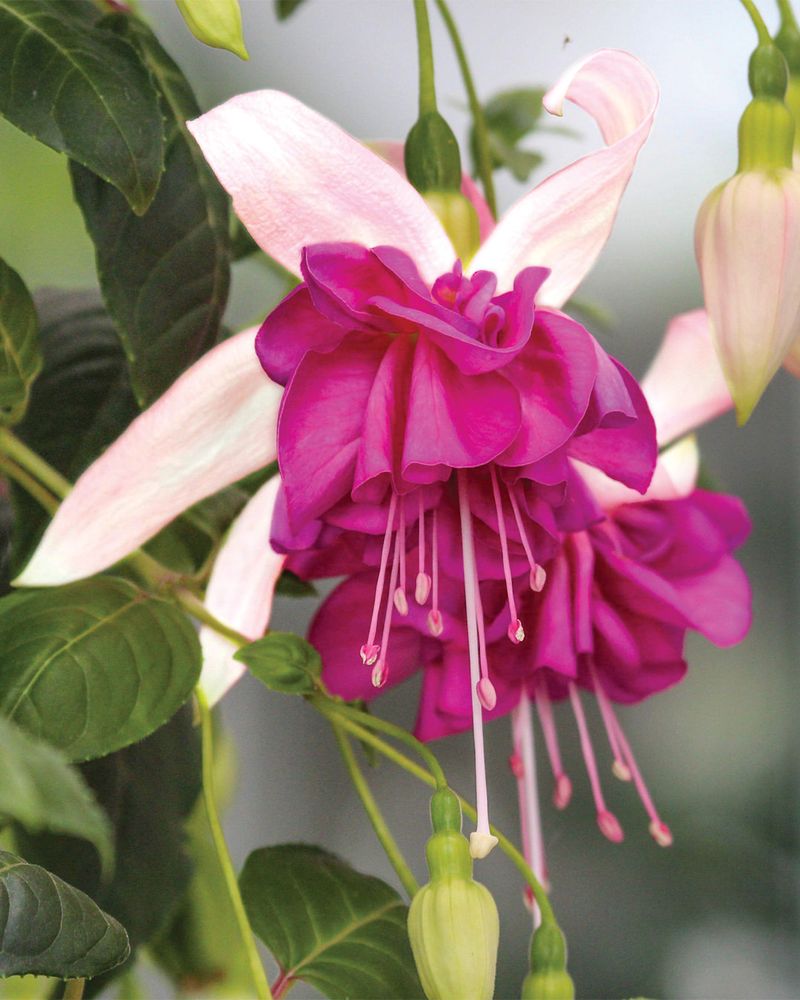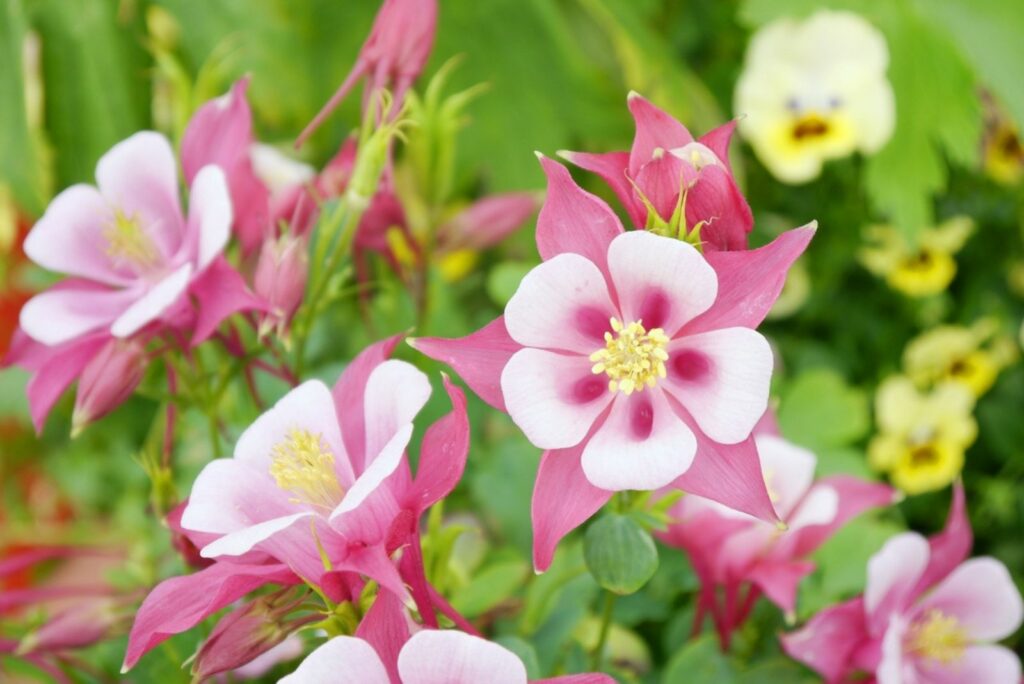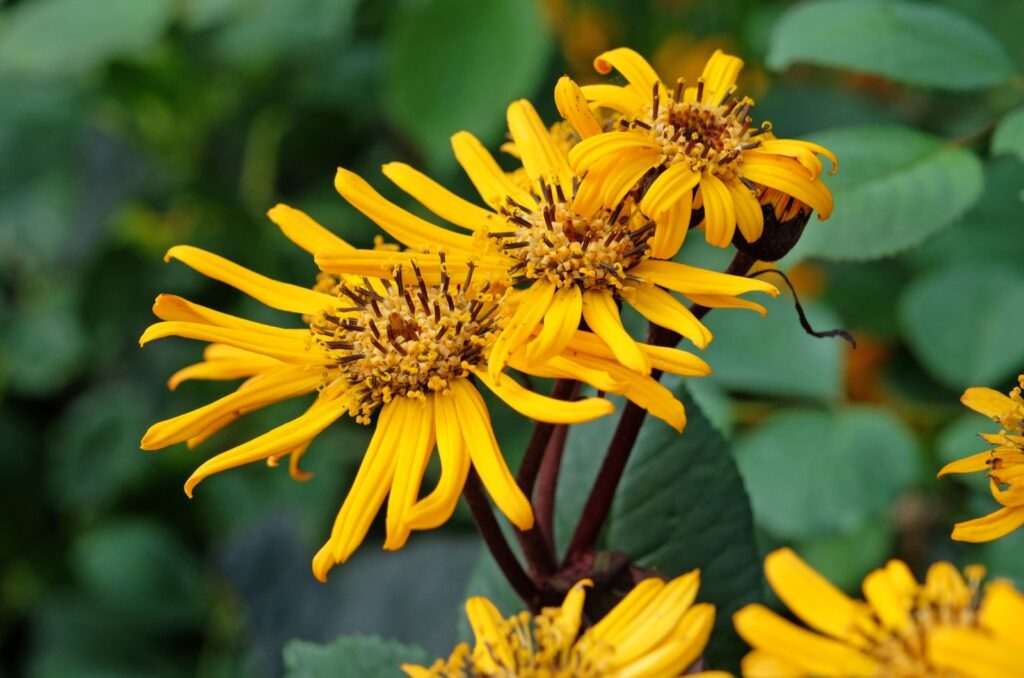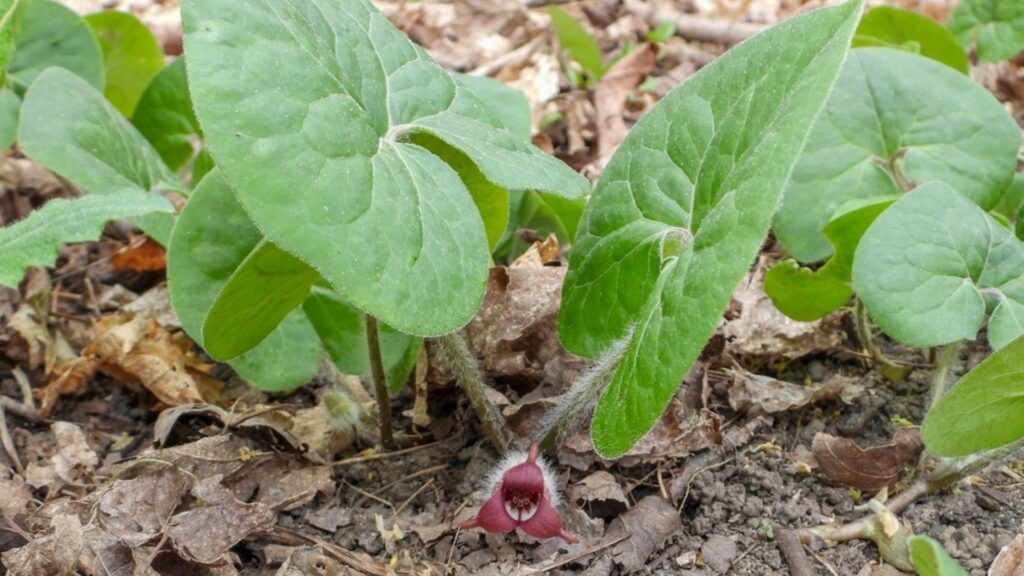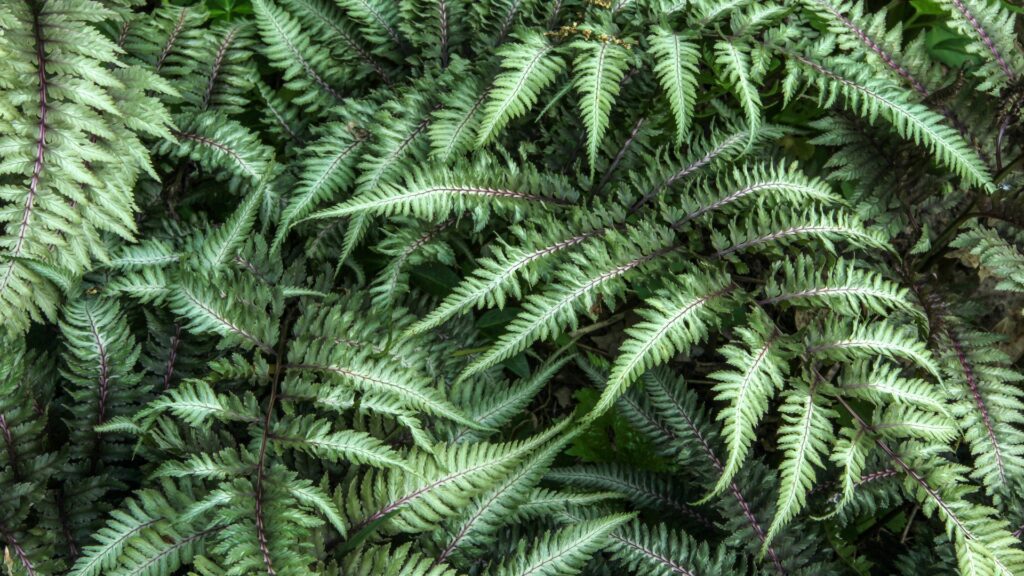Don’t let those shady spots throw a wrench in your garden plans! With the right plants, even the most light-starved corners can become the crown jewels of your landscape. These partial shade-loving beauties aren’t just survivors—they’re showstoppers that thrive where others throw in the towel.
From eye-catching foliage to blooms that steal the spotlight, these garden gems will breathe life into the shadows and transform your dim nooks into lush, irresistible havens.
1. Hosta
In the world of gardening, foliage can be just as captivating as flowers. Hosta, known for its striking leaves, is a prime example. These plants offer an array of colors, from deep green to variegated patterns, thriving effortlessly in partial shade.
Hostas are a favorite among gardeners for their resilience and low maintenance. Place them in well-drained soil, and their lush leaves will create a verdant carpet in no time.
Whether lining a walkway or filling a shady corner, hostas provide texture and interest to any garden setting.
2. Astilbe
Feathery plumes add a whimsical touch to any shaded garden spot. Astilbe brings this charm with its delicate, yet vivid blooms. This plant is especially appreciated for its ability to thrive in low-light conditions.
The soft, fern-like foliage offers a lush backdrop, making the blooms stand out even more. Plant them in moist, well-drained soil to ensure the best growth.
Astilbes come in various colors, including pink, red, and white, providing a splash of color in shaded areas where other plants might falter.
3. Bleeding Heart
Romantic and delicate, the bleeding heart is a shade garden staple. Its heart-shaped flowers dangle gracefully, adding elegance to your garden. This plant thrives in cool, moist environments, flourishing in partial shade.
The bleeding heart’s unique blooms make it a standout feature in any garden. Its foliage adds soft texture, complementing other shade-loving plants.
Ideal for borders or woodland gardens, this plant offers visual interest beyond its flowering season, with attractive leaves that persist throughout summer.
4. Ferns
Incorporating lush greenery into shaded areas can be achieved effortlessly with ferns. These plants are known for their delicate, arching fronds that add an exotic touch to the garden. Ferns are versatile, fitting seamlessly into any shaded garden design.
They thrive in moist, well-drained soil and can tolerate varying light conditions, making them an excellent choice for challenging spots.
Whether you prefer the classic look of Boston ferns or the unique patterns of maidenhair ferns, these plants will enhance your garden’s texture and depth.
5. Heuchera
Colorful foliage is a hallmark of a vibrant garden, even in shaded areas. Heuchera, or coral bells, offers a stunning palette with leaves in shades of burgundy, caramel, and lime. This plant thrives in partial shade, adding color where it’s often lacking.
Heucheras are versatile and can be used in borders or as ground cover. They prefer well-drained soil and a bit of afternoon sun to maintain their vivid colors.
Besides their striking leaves, these plants produce tiny, bell-shaped flowers, adding an extra layer of charm to your garden.
6. Lungwort
Spotted leaves and colorful blooms make lungwort an interesting addition to any shade garden. Known for its adaptability, lungwort thrives in partial to full shade.
This plant produces charming clusters of pink and blue flowers, often appearing simultaneously, creating a delightful contrast against its speckled foliage.
Lungwort prefers moist, well-drained soil, making it an ideal choice for shaded areas with consistent moisture. Its unique appearance and hardiness make it a favorite for adding character to shaded spots.
7. Japanese Forest Grass
Graceful and flowing, Japanese forest grass adds movement to any garden. This ornamental grass thrives in partial shade, providing a soft, cascading effect with its arching leaves.
The variegated green and yellow blades create visual interest and brighten up shaded areas. It’s an excellent choice for ground cover or to edge pathways.
Japanese forest grass prefers well-drained soil and moderate moisture. Its elegant form and subtle color make it a versatile addition to both formal and informal garden designs.
8. Toad Lily
Unique blooms can transform a garden from ordinary to extraordinary. Toad lilies, with their intricate, spotted flowers, offer just that in shaded areas. These plants bloom late in the season, adding interest when other flowers have faded.
Toad lilies thrive in moist, rich soil, making them perfect for woodland gardens. Their orchid-like flowers draw attention, providing a touch of the exotic to your garden.
Whether used in borders or as underplanting, these lilies bring a layer of sophistication and surprise to partially shaded spots.
9. Brunnera
Heart-shaped leaves and tiny blue flowers make Brunnera a delightful addition to shaded gardens. This plant thrives in partial shade, adding a touch of elegance with its silvery-green foliage.
Often likened to forget-me-nots, Brunnera’s delicate blooms appear in early spring, offering a burst of color. It’s an excellent choice for borders or as ground cover.
Brunnera prefers moist, well-drained soil, and its stunning leaves remain attractive throughout the growing season, even after flowering has ceased.
10. Foxglove
Tall and stately, foxgloves bring vertical interest to shaded gardens. Known for their tubular flowers, these plants attract pollinators and add a cottage garden feel.
Foxgloves thrive in partial shade, preferring moist, well-drained soil. Their towering spikes of blooms create a dramatic effect, making them ideal for back borders.
Available in various colors, including purple, pink, and white, foxgloves offer versatility in design. Their biennial nature means they self-seed, providing a continuous display year after year.
11. Pulmonaria
Known for its speckled leaves, pulmonaria, or lungwort, is a charming addition to any shade garden. Its foliage offers a unique texture, while its flowers provide a pop of color.
Pulmonaria thrives in partial shade and prefers moist, well-drained soil. Its blooms start as pink and mature to blue, creating a delightful color transition.
This plant is ideal for woodland gardens and shaded borders, where its hardiness and visual appeal can be fully appreciated. Pulmonaria’s adaptability makes it a reliable choice for challenging spots.
12. Anemone
Graceful and elegant, anemones are a wonderful addition to shaded gardens. Their delicate flowers sway gently in the breeze, adding movement and charm.
Anemones thrive in partial shade and prefer well-drained soil with consistent moisture. They are excellent for borders and underplanting shrubs, offering blooms in late summer and fall.
Available in a variety of colors, including white, pink, and purple, anemones provide versatility in garden design. Their resilience and beauty make them a favorite among shade-loving plants.
13. Solomon’s Seal
Arching stems and bell-shaped flowers are the hallmarks of Solomon’s seal. This elegant plant thrives in shaded environments, where its graceful form can shine.
Solomon’s Seal prefers rich, well-drained soil and can tolerate dry shade once established. Its foliage adds vertical interest, while its flowers attract pollinators.
This plant is ideal for woodland gardens and shaded borders. In autumn, the leaves turn a lovely yellow, extending its season of interest and adding color to fall gardens.
14. Bergenia
Glossy leaves and vibrant blooms make bergenia a standout performer in shaded gardens. Known for its large, leathery foliage, this plant thrives in partial shade.
Bergenia’s pink flowers appear in early spring, creating a cheerful display against its lush green leaves. It’s an excellent choice for ground cover or edging pathways.
This plant prefers moist, well-drained soil and is drought tolerant once established. Bergenia’s robust nature and striking appearance make it a reliable choice for challenging garden spots.
15. Liriope
Grass-like foliage and bold flower spikes define liriope, a versatile plant for shaded gardens. This plant thrives in partial shade, adding texture and color with its purple blooms.
Liriope is ideal for edging paths or as ground cover, providing a lush, green backdrop throughout the year. It prefers well-drained soil and is drought tolerant once established.
With varieties in different heights and colors, liriope fits seamlessly into any garden design. Its low maintenance nature makes it a favorite for busy gardeners looking to add interest to shaded areas.
16. Epimedium
Delicate and charming, epimedium offers a touch of elegance to shaded gardens. Known for its heart-shaped leaves and delicate flowers, this plant thrives in partial to full shade.
Epimedium produces clusters of yellow and pink blooms, providing a soft, romantic feel. It’s an excellent choice for woodland gardens or shaded borders.
Preferring well-drained soil, epimedium is drought tolerant once established. Its attractive foliage remains lush throughout the growing season, making it a reliable and beautiful choice for challenging garden spots.
17. Foamflower
Fluffy blooms and heart-shaped leaves make foamflower a delightful choice for shaded areas. This plant flourishes in partial shade, creating a soft, romantic atmosphere with its delicate white flowers.
Foamflowers prefer moist, well-drained soil and are ideal for woodland gardens or as ground cover. Their foliage remains attractive throughout the growing season.
These plants are low maintenance and deer resistant, making them an excellent choice for shaded gardens. Their charming appearance and resilience ensure a lovely display in light-challenged spots.
18. Ajuga
Ground covers like ajuga can transform shaded areas into lush, verdant spaces. Known for its glossy leaves and vibrant blue flower spikes, this plant thrives in partial shade.
Ajuga spreads quickly, making it ideal for filling gaps or covering large areas. It’s low maintenance and drought tolerant once established.
This plant prefers well-drained soil and can handle light foot traffic, making it an excellent choice for pathways or borders. Ajuga’s resilience and striking appearance make it a favorite for adding interest to shaded gardens.
19. Hellebore
Winter blooms can bring life to a garden when everything else is dormant. Hellebores, with their large, nodding flowers, are perfect for adding color to shaded areas in late winter.
These plants thrive in partial to full shade and prefer well-drained soil. Their foliage remains attractive year-round, adding texture and depth to the garden.
Available in various colors, including white, pink, and purple, hellebores are versatile and fit well in woodland gardens or shaded borders.
20. Japanese Anemone
Late summer blooming plants can extend the visual appeal of your garden. Japanese anemones are perfect for this, with their tall, graceful stems and cup-shaped flowers.
These plants thrive in partial shade and prefer well-drained soil with consistent moisture. Their white blooms provide a fresh look and contrast beautifully against dark foliage.
Japanese anemones are ideal for borders and underplanting trees, where their height and elegance can be showcased. Their resilience and beauty make them a valuable addition to shaded gardens.
21. Lenten Rose
Early spring blooms can bring a garden to life, even in shaded areas. The lenten rose, or hellebore, offers striking flowers that appear when little else is blooming.
Thriving in partial to full shade, these plants prefer well-drained soil and provide year-round interest with their evergreen foliage.
Available in a variety of colors, including pink, white, and purple, lenten roses add elegance and charm to woodland gardens or shaded borders.
22. Tiarella
Fluffy flower spikes and patterned foliage make tiarella a captivating choice for shaded gardens. This plant thrives in partial shade, offering a delicate display of white blooms.
Tiarella prefers moist, well-drained soil and is ideal for woodland gardens or as ground cover. Its foliage remains attractive throughout the growing season, adding texture to the garden.
Low maintenance and deer resistant, tiarella is a reliable choice for shaded areas, providing visual interest and charm with its unique flowers and leaves.
23. Viola
Small flowers can make a big impact in a garden. Violas, with their cheerful blooms, are perfect for adding color to shaded areas in early spring.
These plants thrive in partial shade and prefer well-drained soil. Their flowers provide a burst of color, ranging from purple to yellow, creating a vibrant display.
Violas are ideal for borders, containers, or as ground cover, offering versatility in garden design. Their resilience and beauty ensure a delightful addition to any shaded garden.
24. Rhododendron
Large flowers can create a dramatic effect in gardens. Rhododendrons, with their showy blooms, are perfect for adding color to shaded areas.
These plants thrive in partial shade and prefer well-drained, acidic soil. Their glossy leaves provide year-round interest, adding structure and depth to the garden.
Available in a variety of colors, including pink, purple, and white, rhododendrons are ideal for woodland gardens or shaded borders. Their size and beauty make them a stunning focal point in any garden.
25. Hydrangea
Rounded clusters of flowers can bring a garden to life. Hydrangeas, with their large, spherical blooms, are perfect for adding color to shaded areas.
These plants thrive in partial shade and prefer well-drained, rich soil. Their flowers range in color from blue to pink, depending on soil pH.
Hydrangeas are ideal for borders, containers, or as focal points, offering versatility and beauty in garden design. Their resilience and striking appearance make them a favorite among garden enthusiasts.
26. Primrose
Bright blooms can transform a garden into a vibrant space. Primroses, with their cheerful flowers, are perfect for adding color to shaded areas in early spring.
These plants thrive in partial shade and prefer well-drained soil with consistent moisture. Their flowers range in color, providing a cheerful display.
Primroses are ideal for borders, containers, or as ground cover, offering versatility in garden design. Their resilience and beauty ensure a delightful addition to any shaded garden.
27. Hebe
Compact shrubs can add structure and interest to gardens. Hebe, with its small, purple flowers and glossy leaves, is perfect for adding color to shaded areas.
These plants thrive in partial shade and prefer well-drained soil. Their flowers attract pollinators, adding life to the garden.
Hebes are ideal for borders, containers, or as small hedges, offering versatility in garden design. Their resilience and beauty ensure a delightful addition to any shaded garden.
28. Fuchsia
Tubular flowers can bring a tropical feel to gardens. Fuchsias, with their hanging blooms, are perfect for adding color to shaded areas.
These plants thrive in partial shade and prefer well-drained, moist soil. Their flowers attract hummingbirds, adding life to the garden.
Fuchsias are ideal for containers, hanging baskets, or as focal points, offering versatility and beauty in garden design. Their unique appearance and vibrant colors ensure a stunning display in any shaded garden.
29. Columbine
Delicate spurred flowers give columbine a whimsical, fairy-tale quality that’s perfect for shaded garden spots. With its nodding blooms in hues of blue, purple, pink, and white, columbine brings subtle elegance to light-challenged areas.
Thriving in partial shade, this perennial prefers well-drained soil and a bit of moisture to stay happy. Its lacy foliage adds texture, even after the flowers have faded.
Columbine is excellent for borders or naturalized woodland gardens, attracting pollinators while maintaining a low-maintenance profile. Its graceful form adds a gentle charm wherever it’s planted.
30. Leopard Plant
Striking foliage and bold yellow blooms make the leopard plant an eye-catching addition to shaded gardens. Its large, glossy leaves—often with unique variegation—add drama and structure to darker corners.
Leopard plants thrive in partial to full shade, preferring consistently moist, rich soil. Their daisy-like flowers bloom in late summer, offering a cheerful contrast against deep green leaves.
Ideal for borders or near water features, this plant’s tropical look and surprising hardiness bring texture and color to shaded landscapes. Leopard plant is a must-have for gardeners seeking bold beauty in low-light spots.
31. Canadian Ginger
Lush ground covers can tie a shaded garden together, and Canadian ginger does this with style. Known for its heart-shaped leaves and understated elegance, this native plant thrives in partial to full shade.
Its low-growing habit makes it perfect for filling in gaps beneath trees or alongside shaded paths. Canadian ginger prefers rich, moist, well-drained soil and spreads gradually to form a dense carpet.
While its flowers are hidden beneath the foliage, the plant’s bold leaves create a soothing, woodland feel. Canadian ginger is ideal for naturalistic gardens seeking beauty with minimal upkeep.
32. Japanese Painted Fern
For a touch of color in your shade garden, the Japanese painted fern offers silvery fronds with hints of burgundy and green. This fern brings a delicate yet dramatic texture to the landscape, perfect for shaded borders or mixed plantings.
Thriving in partial to full shade, it prefers consistently moist, well-drained soil. Its unique coloration sets it apart from traditional ferns, offering visual contrast in darker areas of the garden.
Low maintenance and deer resistant, this fern adds both texture and refined color to any shady space. It pairs beautifully with hostas, heucheras, and other shade-loving companions.

